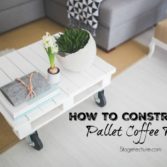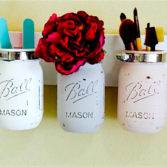Entry #8, October 9, 2009
Whether you are buying a brand new home, or a resale, the upgraded finishes or “add-ons” can be the selling point of the house. Remember, there is such thing as too many upgrades! If you have poured $100,000 into Italian marble floors, and imported granite from Portugal, and the neighboring homes have linoleum floors and laminate counter tops, you may not get your return on investment. Conversely, if you have a 50 year old home, with original plumbing and electrical wiring, and the neighboring homes have brought theirs up to modern codes and buyer’s appeal, you may want to consider doing the same.
Upgrading to stay competitive:
What homeowner doesn’t love upgrades? Especially if we are trying to keep up with the Smith’s or better yet…are the Smith’s! Here are some tips:
Know your market (your neighbors): Most people buy their homes with the intent of staying in them for generations.. the reality, most people live in their homes for 4-10 years, and then move. With that said, you will eventually sell this home. When you decide to upgrade, choose the parts of the home that similar houses in your age, size, price, and style are doing.
*Kitchen’s and Master Bedroom’s/Bathroom’s. Most home buyer’s look at these rooms first.
In your kitchen, think about upgrading the: appliances, counter tops, cabinetry, flooring, plumbing fixtures and
amenities. In your Master Bedroom/Bathroom, think about upgrading the: size, flooring, plumbing fixtures, and features. Features like double sinks, dual showering areas, or even a sitting area will help raise the appeal to your home.
*Flooring: One area of the home that’s overlooked but adds value.
- Carpet- Consider upgrading to a higher quality, more neutral colors, and don’t forget the carpet pad!
- Linoleum/Rolled vinyl – usually used as the basic flooring by home builder’s. Consider upgrading to wood, tile, slate, etc.. These materials are more resilient to wear and tear, and keep their beauty with regular maintenance and care.
- Trying to stay green? Consider cork flooring – good for noise control, warm under foot, and durable.
*Upgrading on a dime…
Don’t have money to pour into upgrades? Try painting all rooms with neutral colors, and keep it fresh every few years. Window treatments like blinds, drapery, can also be an affordable upgrade that usually stay with the house.
Upgrading to stay current:
Many home buyers love the appeal of older homes for their historical nature, feel and uniqueness. Remember the upgrades in older homes may not only be cosmetic, but rather for code compliance, modern advancements in systems, or the safety of your family.
Systems: such as heating/ventilation/air-conditioning should always be reviewed and tested for code compliance, and efficiency every 10-20 years. This can mean replacing older units, to replacing ducting, vents, and thermostats in the home.
Structural: concerns can stem from making sure the foundation is still stable to replacing old structural members, such as columns and beams. Especially in historic homes, upgrades of this nature may be costly, but also may keep the home livable for another 100 years!
Plumbing: piping from copper to PVC may be applicable. Ask a professional home inspector to suggest necessary upgrades to your home. They can help determine what upgrades are for appeal, and which are for safety and code compliance.
Cosmetic: The same upgrades to finishes for newer homes, applies to older homes. Consider replacing flooring, appliances, windows, doors, electrical outlets/switches, plumbing fixtures, and other features that “date” the home.
For more home upgrade ideas on Stagetecture, click here.
Receive Stagetecture's Daily Lifestyle Ideas
FREE - Daily emails with recipes, home decor, D.I.Y, and lifestyle tips! : ) Who doesn't need help?









Leave a Reply